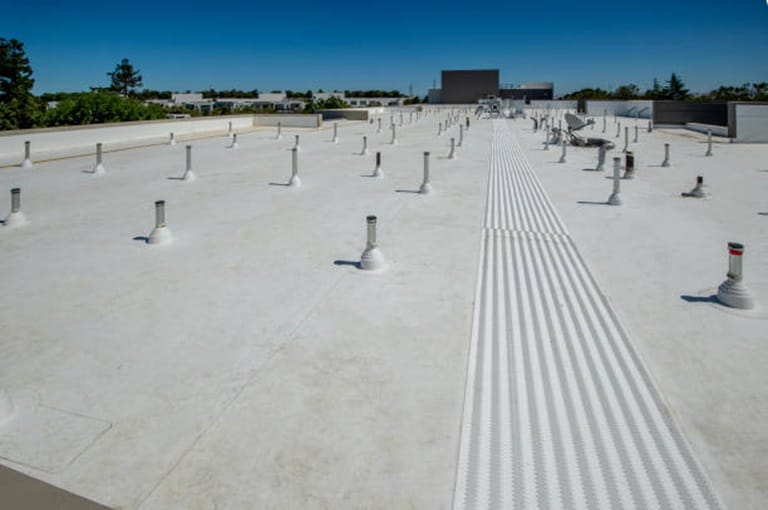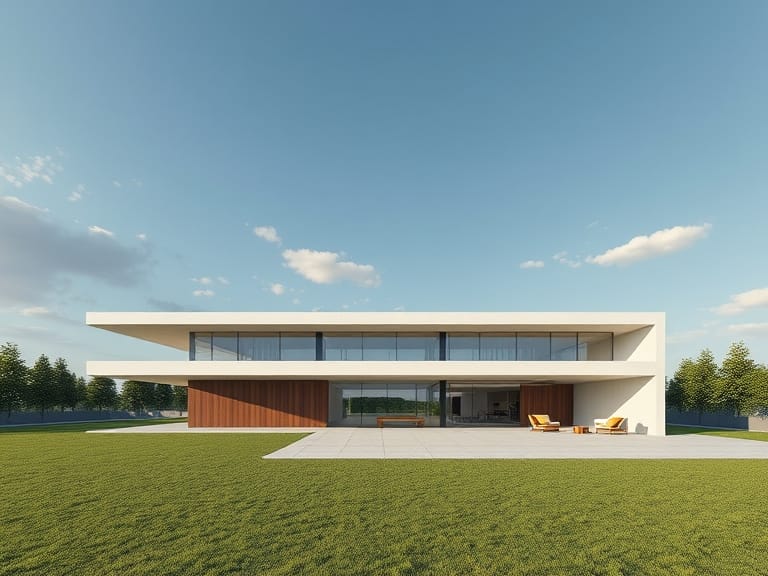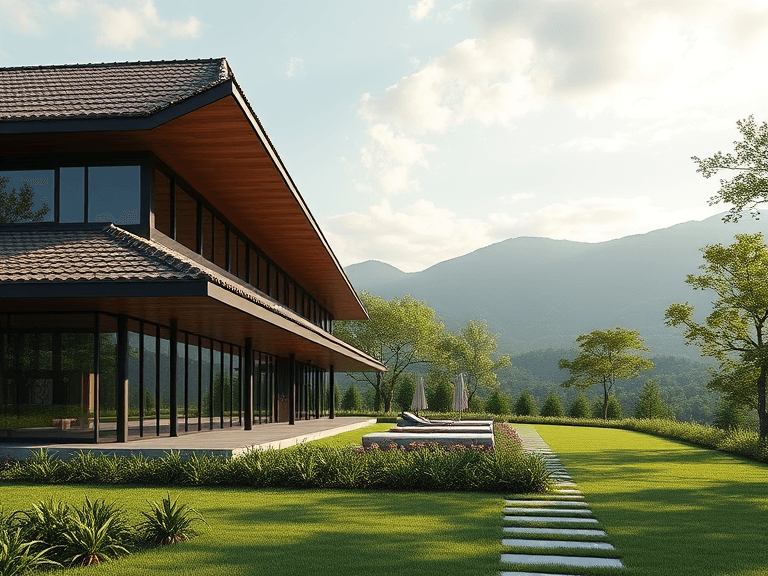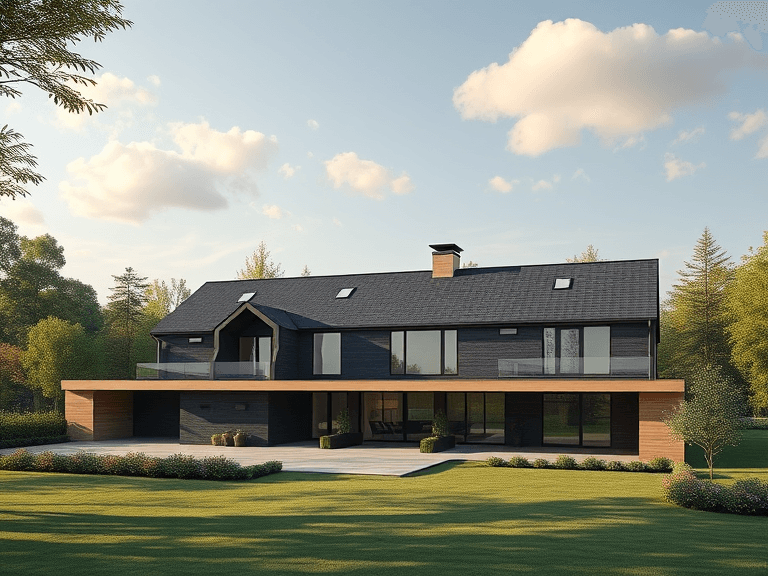
Flat roofing has gained significant popularity in recent years, particularly in urban environments where space is at a premium. Characterized by minimal or no pitch, flat roofs are predominantly found on commercial buildings, warehouses, and some residential structures. This type of roofing allows for the efficient utilization of space, often serving as additional areas for ventilation, equipment placement, or even recreational spaces such as rooftop gardens and terraces.
The construction of flat roofing typically employs various materials, each with its unique properties suited for specific applications. Common materials include built-up roofing (BUR), modified bitumen, single-ply membranes, and spray polyurethane foam. Built-up roofing consists of multiple layers of asphalt and reinforcing fabrics, providing durability and weather resistance. Modified bitumen is a flexible membrane that enhances waterproofing and is often applied using heat or adhesive. Single-ply membranes come in two main types – TPO (thermoplastic olefin) and EPDM (ethylene propylene diene monomer) – known for their lightweight and energy-efficient properties. Finally, spray polyurethane foam offers seamless coverage and excellent insulation, making it a versatile option.
Installing flat roofing presents distinct advantages, such as ease of installation, cost-effectiveness, and the ability to create functional outdoor spaces. However, it is also essential to consider potential disadvantages associated with flat roofs, including drainage issues, limited lifespan, and temperature fluctuations leading to wear and tear. Understanding the nuances of flat roofing can inform property owners’ decisions about whether it aligns with their needs, expectations, and budget. By exploring both sides of the equation, one can better appreciate the full scope of the advantages and disadvantages of installing flat roofing in various settings.
Advantages of Flat Roofing: Cost Efficiency
One of the primary advantages of flat roofing is its cost efficiency, which is a significant consideration for both residential and commercial property owners. Flat roofs typically require fewer materials compared to traditional pitched roofs, as their design often utilizes less roofing surface area. This reduction in material means that initial installation costs are generally lower, making flat roofing an appealing option for budget-conscious consumers.
Additionally, the straightforward design of flat roofs can simplify the installation process, potentially leading to reduced labor costs during construction. As the construction time is often shorter than that for sloped roofing, project timelines can also be accelerated, which is particularly beneficial for commercial projects that aim to minimize downtime.
Flat roofing also offers inherent energy efficiency benefits that contribute to long-term savings. The flat surface allows for easy installation of insulation systems that can enhance a building’s thermal performance. When adequately insulated, flat roofs can help maintain consistent indoor temperatures, reducing the reliance on heating and cooling systems. This energy efficiency can lead to lower utility bills over time, a compelling advantage for homeowners and business operators alike.
Furthermore, maintenance costs associated with flat roofs can be lower compared to their pitched counterparts. Flat roofs often provide easier access for maintenance personnel, enabling quick inspections and repairs. Regular maintenance can further prolong the lifespan of the roof, resulting in fewer replacement costs and making flat roofing an economically sound investment over the years.
Both initial installation pricing and associated ongoing savings make flat roofing a cost-effective choice, aligning with the long-term fiscal strategies of many homeowners and commercial property owners.
Advantages of Flat Roofing: Versatility and Usability
Flat roofing has become increasingly popular due to its unique versatility and functional benefits. One of the primary advantages of installing flat roofing is its capacity to accommodate various uses beyond mere shelter. For instance, homeowners can transform their flat roofs into rooftop gardens, providing an outdoor oasis amidst urban settings. These gardens not only enhance the aesthetic appeal of the property but also contribute to better air quality and offer insulation benefits.
Additionally, flat roofs can be utilized as patios or outdoor living spaces, allowing residents to enjoy additional recreational areas away from the confines of indoor spaces. This use of flat roofing supports the trend of maximizing usable space within compact urban environments, making it a practical choice for city dwellers looking to expand their living area.
Another significant advantage is the inherent accessibility flat roofs provide, which is especially beneficial for maintenance and installation of HVAC systems. Unlike pitched roofs, which can be difficult to access, flat roofing allows technicians easy entry, thereby streamlining the installation, maintenance, or replacement processes. This accessibility can lead to lower maintenance costs over time, as regular check-ups can be performed more easily.
Moreover, modern architecture increasingly embraces flat roofing due to its sleek, minimalist aesthetic. The clean lines and smooth surfaces offer a contemporary look that complements various architectural styles, making them an attractive option for both residential and commercial buildings. Overall, the advantages outlined illustrate that flat roofing is not only functional but also enhances the usability and attractiveness of buildings, whether they serve as private homes or bustling commercial spaces.
Advantages of Flat Roofing: Easier Installation and Repairs
The installation process is a critical factor when considering various roofing options, and flat roofing often stands out for its ease and efficiency. Unlike sloped roofs, which require a more complex framework to ensure proper drainage and support, flat roofs generally have a simpler construction method. This streamlined approach translates to a quicker setup time, allowing contractors to complete projects faster, which can ultimately lead to lower labor costs. The materials used in flat roofing systems, such as EPDM, TPO, or modified bitumen, are lightweight and easy to handle, further facilitating a more efficient installation process.
Moreover, the simplicity in design inherent in flat roofs extends to maintenance and repairs as well. When damage occurs, flat roofs typically offer easier access for repairs, minimizing the challenges that may arise with steeply sloped surfaces. Common issues, such as punctures or leaks, can often be addressed swiftly without the need for extensive scaffolding or specialized equipment. This accessibility can lead to reduced repair costs and can also lessen the possibility of needing extensive insurance coverage, as repairs are often more manageable.
In terms of long-term financial benefits, the advantages of installing flat roofing over sloped options become apparent. With lower installation and repair costs, property owners can divert those savings towards more significant investments or enhancements to their buildings. Additionally, since flat roofs may require less frequent maintenance due to their durable materials, homeowners can expect decreased long-term expenses. Collectively, these factors illustrate why many building owners consider flat roofing an attractive option when weighing the advantages and disadvantages of various roofing systems.

Disadvantages of Flat Roofing: Drainage Issues
One of the primary disadvantages of installing flat roofing is related to drainage issues. Unlike sloped roofs that naturally direct rainwater away from the structure, flat roofs can potentially trap water, leading to serious problems if not adequately designed or maintained. When a flat roof lacks the necessary pitch or drainage systems, it can create areas of standing water, which may result in leaks, deterioration, and ultimately damage to both the roof itself and the building below.
Water retention is a significant concern for flat roofing systems. If water accumulates for an extended period, it increases the risk of developing leaks, which can compromise the integrity of the roofing materials. Additionally, the constant presence of moisture can lead to mold and mildew growth, posing health risks for occupants and contributing to structural decay. Therefore, effective drainage solutions become critical when considering flat roofing installation.
To mitigate these drainage issues, various solutions can be implemented during the design and construction of flat roofs. One common approach is to incorporate parapet walls and scuppers, which facilitate the movement of water off the roof’s surface. Additionally, installing internal drains can help channel water to designated areas, ensuring proper drainage and reducing the likelihood of pooling. Regular maintenance, such as cleaning gutters and inspecting the roofing materials, is also essential to prevent blockages and ensure that water flows freely from the roof.
In conclusion, while flat roofing systems offer certain advantages, the disadvantages associated with drainage issues must be carefully considered. Homeowners and builders should prioritize effective drainage solutions and maintenance practices to safeguard their flat roofs from potential water-related problems, thus prolonging the life of the roofing system and protecting the underlying structure.
Disadvantages of Flat Roofing: Longevity and Durability Concerns
Flat roofing systems present several disadvantages, particularly when it comes to their longevity and durability. Unlike pitched roofs, which are designed to facilitate water drainage effectively, flat roofs can accumulate standing water if not correctly installed or maintained. This issue can lead to significant wear and tear over time, potentially diminishing the lifespan of the roofing material.
The average lifespan of flat roofing materials varies significantly depending on the type used. For instance, single-ply membrane roofs, such as TPO and PVC, typically last around 15 to 30 years with proper maintenance. However, modifications or maintenance neglect can reduce this lifespan. Built-up roofing systems (BUR), known for their layered construction, may last between 20 to 30 years, while modified bitumen systems can average 20 years. While these figures seem reasonable, they still fall short compared to the longevity of most pitched roof systems, which can last 50 years or longer depending on the materials utilized.
Furthermore, flat roofing materials can be more susceptible to damage from extreme weather conditions, including heavy rainfall, snow, or ice accumulation. Without a proper drainage system, the risk of leaks increases, resulting in water penetration and potential structural damage. Moreover, poor installation practices can exacerbate these vulnerabilities. If the installation is not executed correctly, it may lead to complications such as membrane punctures or seams that fail, significantly shortening the roof’s lifespan.
Ultimately, while flat roofing systems can offer various advantages, it is essential to weigh these benefits against the longevity and durability concerns. Understanding these aspects will aid homeowners and builders in making informed decisions when selecting the most suitable roofing option for their needs.
Disadvantages of Flat Roofing: Energy Efficiency Challenges
Flat roofing systems, while popular for their cost-effectiveness and modern aesthetic, present distinct challenges in terms of energy efficiency. One primary concern revolves around heat absorption. Unlike sloped roofs, flat roofs tend to accumulate heat during the summer months, which can significantly raise indoor temperatures. This situation often leads homeowners to rely heavily on air conditioning systems, thus increasing cooling costs and reducing overall energy efficiency.
Moreover, the lack of a steep slope on flat roofs means that water and debris can accumulate more easily, potentially leading to additional maintenance concerns that may indirectly affect energy consumption. When a flat roof gets cluttered with moss, leaves, or other debris, it can hinder proper insulation performance, further exacerbating issues related to energy efficiency. These factors can translate to higher utility bills and increased environmental impact, making it essential for property owners to consider before installation.
However, there are methods to mitigate these energy efficiency challenges. Implementing reflective coatings on flat roofing surfaces can significantly improve energy efficiency by reflecting sunlight away, thereby minimizing heat absorption. In addition, incorporating adequate insulation materials can help maintain a more consistent indoor temperature throughout the year, which in turn can reduce the reliance on HVAC systems. Property owners may also consider installing a green roof, which not only enhances insulation but also encourages rainwater absorption, aiding in thermal regulation.
Ultimately, addressing the energy efficiency challenges associated with flat roofing requires a combination of thoughtful design, appropriate materials, and regular maintenance. This holistic approach can help property owners reap the benefits of flat roofing, while minimizing the negative implications on their energy expenses.
Maintenance Requirements for Flat Roofing
Flat roofing systems are popular for both residential and commercial buildings due to their modern aesthetics and efficient use of space. However, the advantages and disadvantages of installing flat roofing heavily depend on its maintenance. To ensure longevity and optimal performance, regular maintenance is essential. This involves routine inspections, effective cleaning, and prompt repairs to address any issues that may arise.
Routine inspections are crucial for identifying potential problems early on. It is advisable to conduct these inspections at least twice a year, ideally in the spring and fall, and after severe weather events. During an inspection, various elements should be assessed, such as the integrity of the roof membrane, drainage systems, and the seams. Detecting early signs of wear and tear can help prevent more severe damage and costly repairs in the future.
Cleaning the roof regularly is another essential aspect of maintenance. Accumulated debris, such as leaves, dirt, and other materials, can hinder proper drainage, leading to ponding water, which is one of the significant disadvantages of flat roofing. This standing water can accelerate membrane degradation and may result in leaks. Therefore, keeping the roof surface clear and ensuring that gutters and drains are functioning properly are vital for maintaining the roof’s condition.
In addition, addressing repairs promptly can significantly minimize long-term maintenance needs. If any issues, such as cracks or blisters, are detected during inspections, they should be repaired immediately to avert more costly endeavors. Furthermore, choosing quality materials that require less maintenance can aid in reducing the frequency and intensity of upkeep. By prioritizing maintenance and utilizing appropriate materials, property owners can enhance the advantages of a flat roofing system while mitigating its disadvantages.
Conclusion: Is Flat Roofing Right for You?
In examining the advantages and disadvantages of installing flat roofing, it becomes evident that this roofing style presents unique benefits and challenges that must be carefully considered. One of the primary advantages is cost-effectiveness; flat roofs are often more affordable in terms of materials and installation when compared to traditional pitched roofing systems. Furthermore, flat roofs offer additional usable space, such as rooftops that can be transformed into terraces, gardens, or recreational areas. Their accessibility simplifies maintenance, making it easier to inspect and perform necessary repairs.
However, while these benefits highlight the practicality of flat roofing, it is important to acknowledge some key drawbacks. One significant concern is the potential for water pooling, which can lead to leaks and damage if not properly managed. Adequate drainage systems must be installed to minimize this risk. Moreover, flat roofs typically have a shorter lifespan than sloped roofs, often requiring more frequent repairs and replacements. Climatic conditions can also impact the longevity and performance of flat roofs; extreme weather can exacerbate their vulnerabilities.
When contemplating whether flat roofing is suitable for a particular project, homeowners and builders should weigh these advantages and disadvantages in light of their specific needs and circumstances. Factors such as budget, local climate, and intended building use should be assessed meticulously. Seeking advice from roofing professionals can provide valuable insights tailored to your individual requirements. Ultimately, the decision to install flat roofing should be informed by a balanced evaluation of its benefits against its drawbacks to ensure that it aligns with the overall goals of the property.


